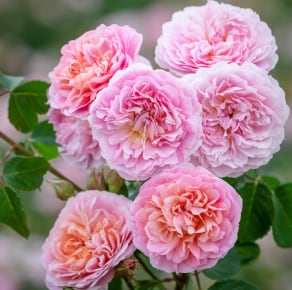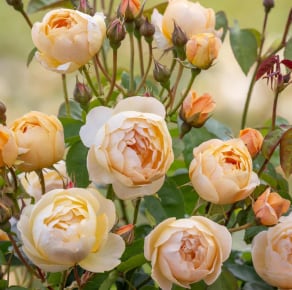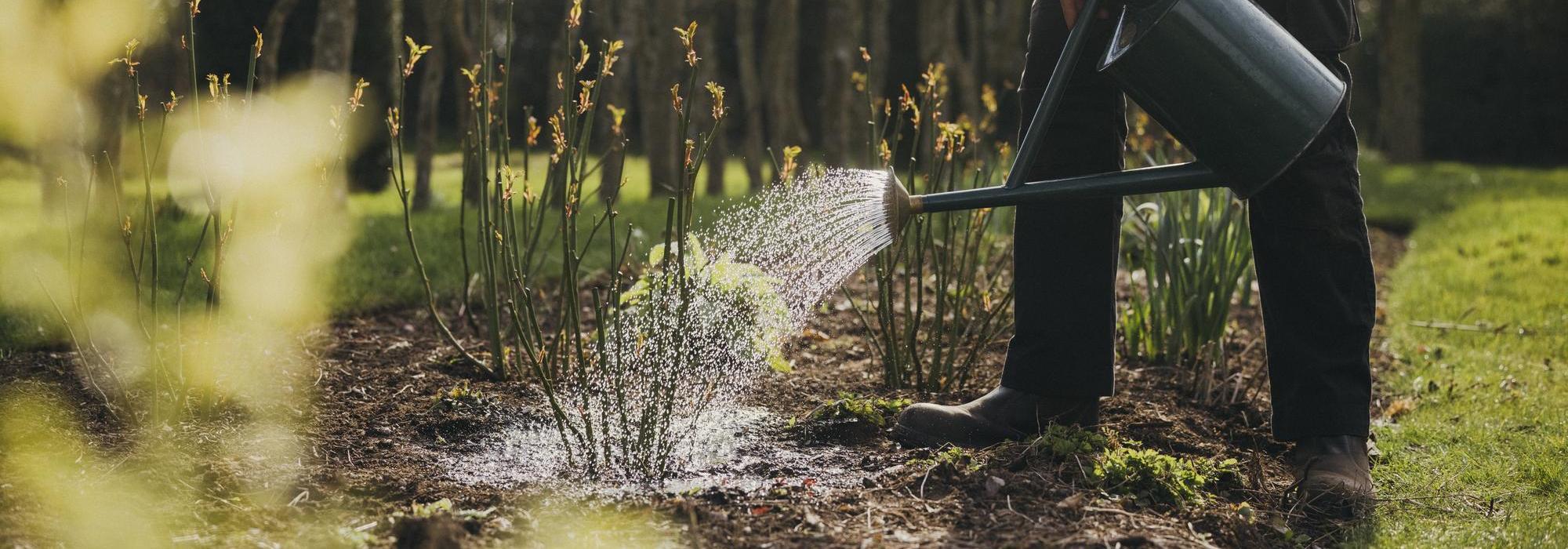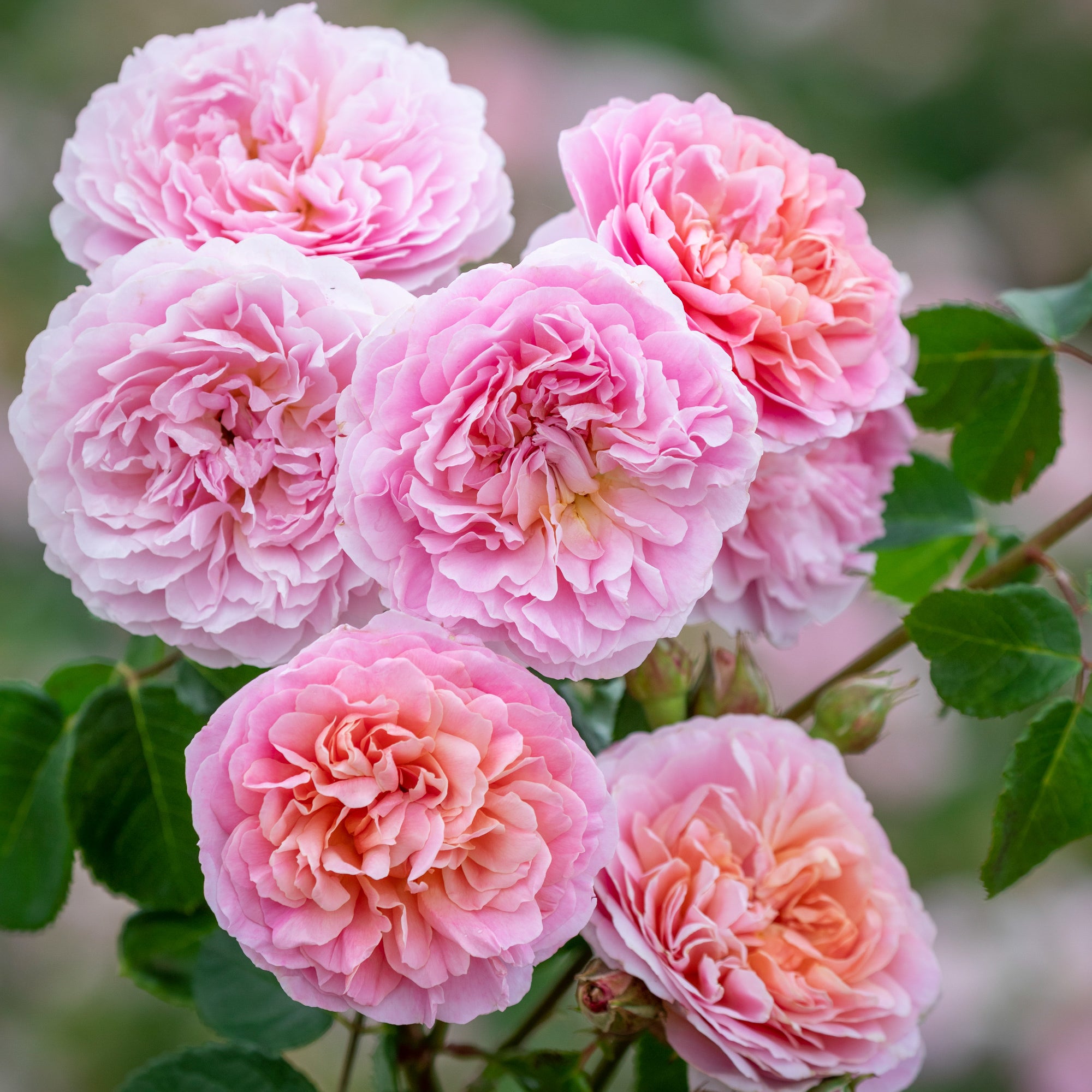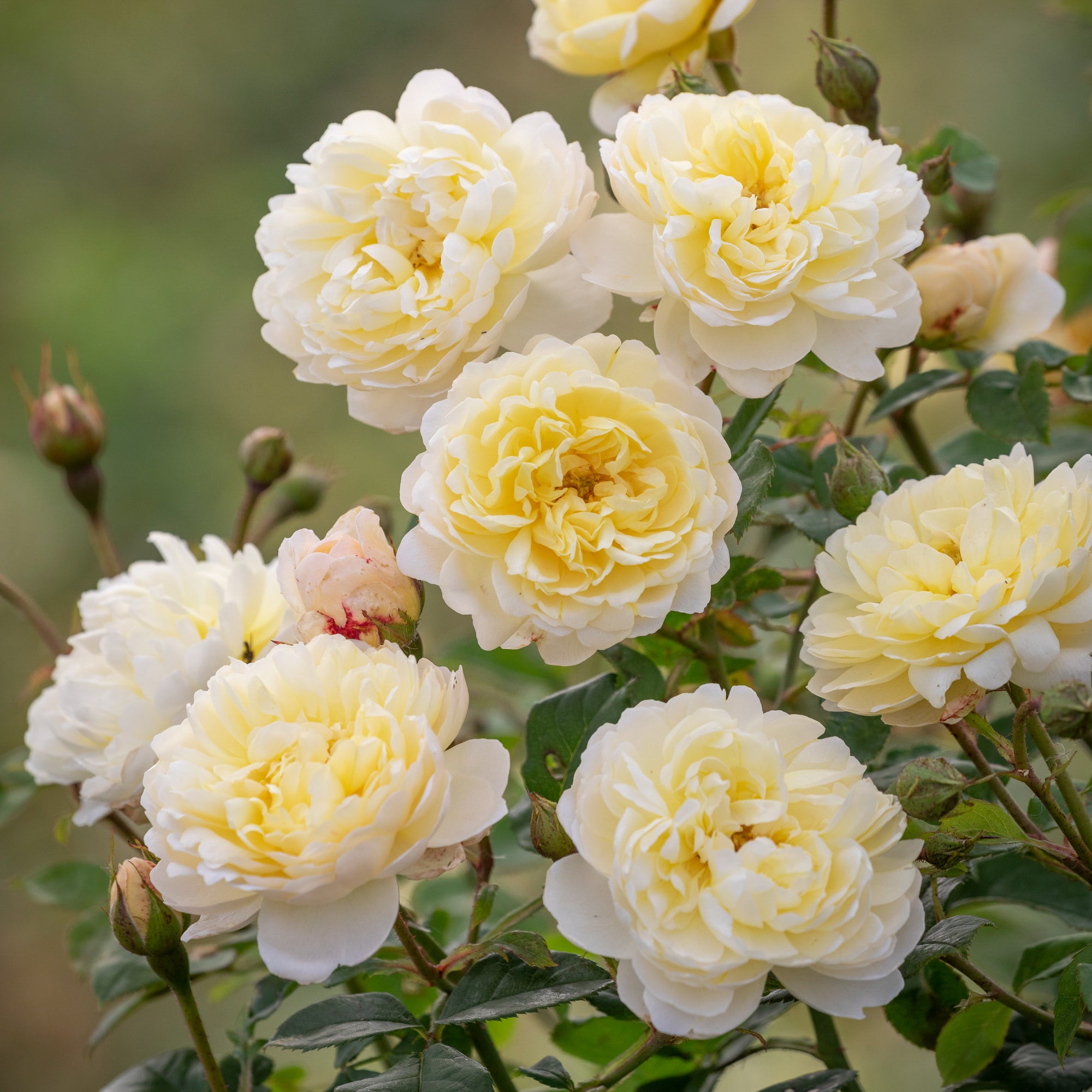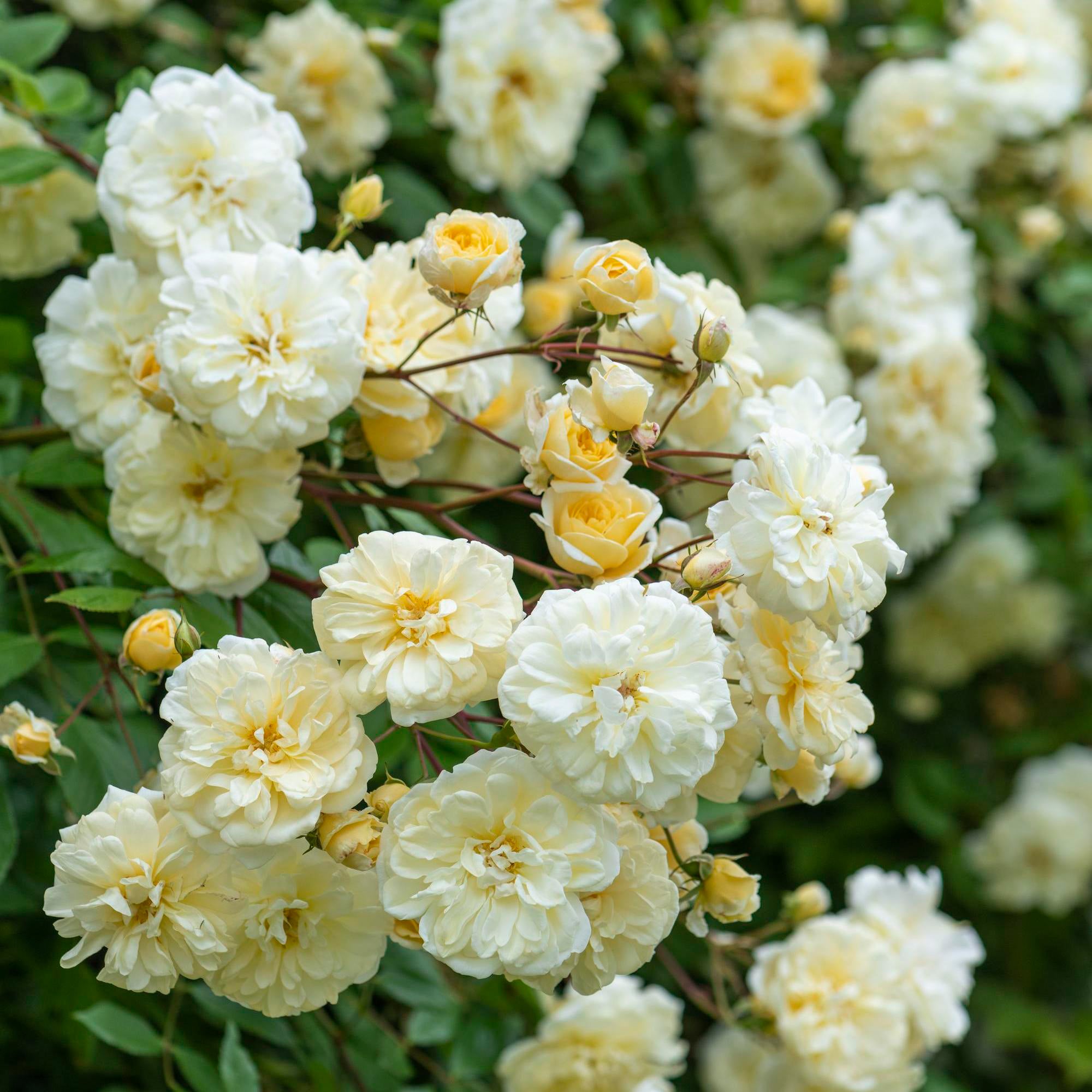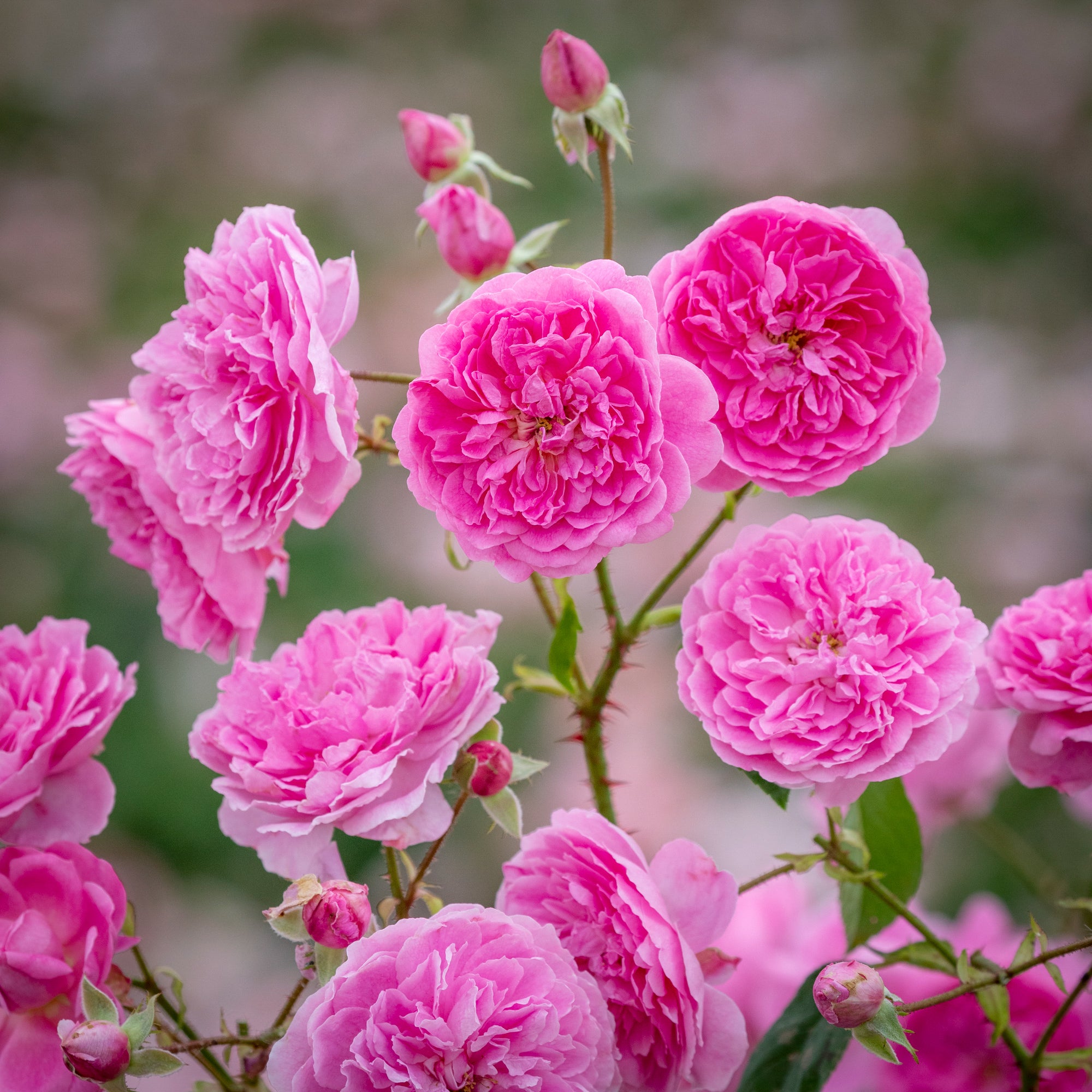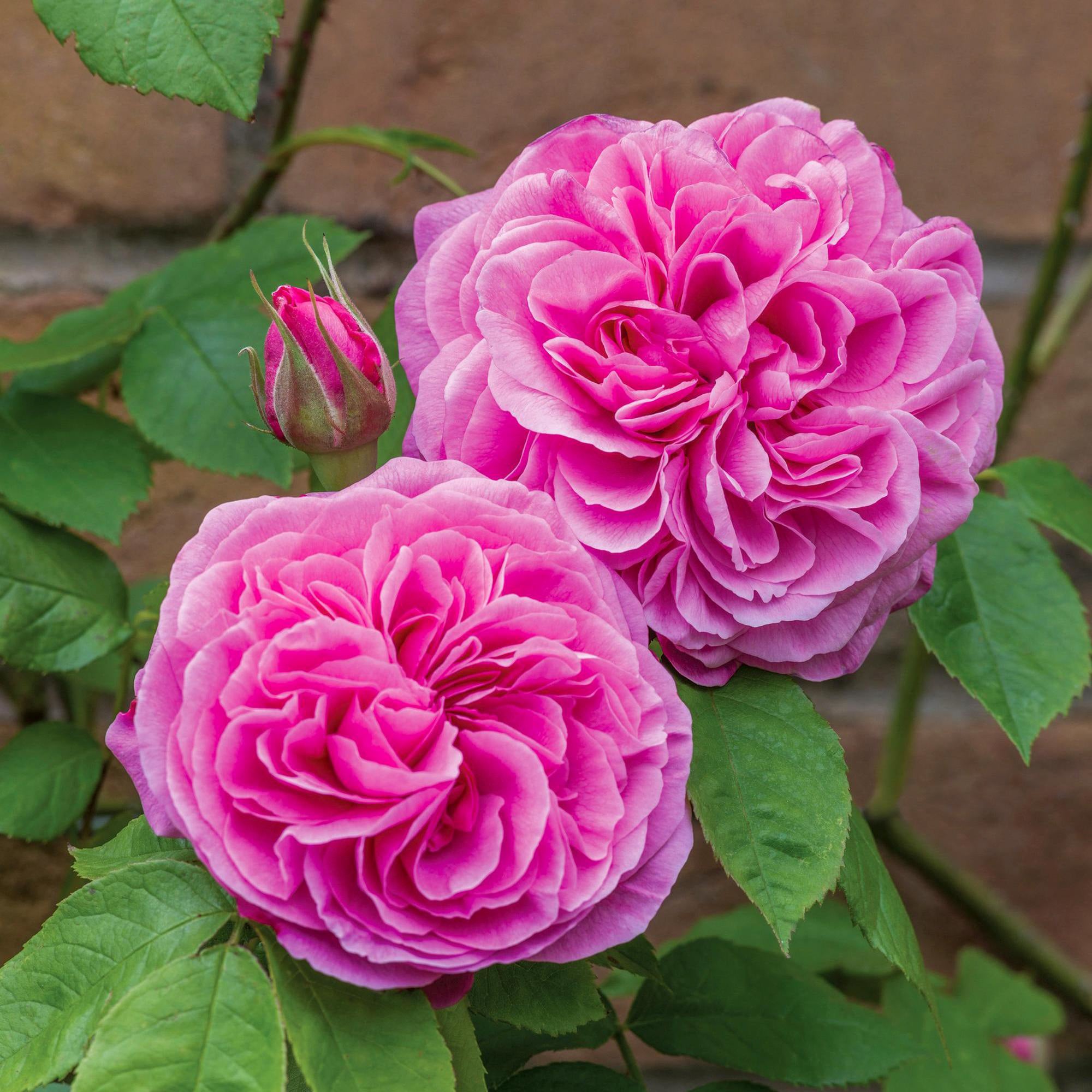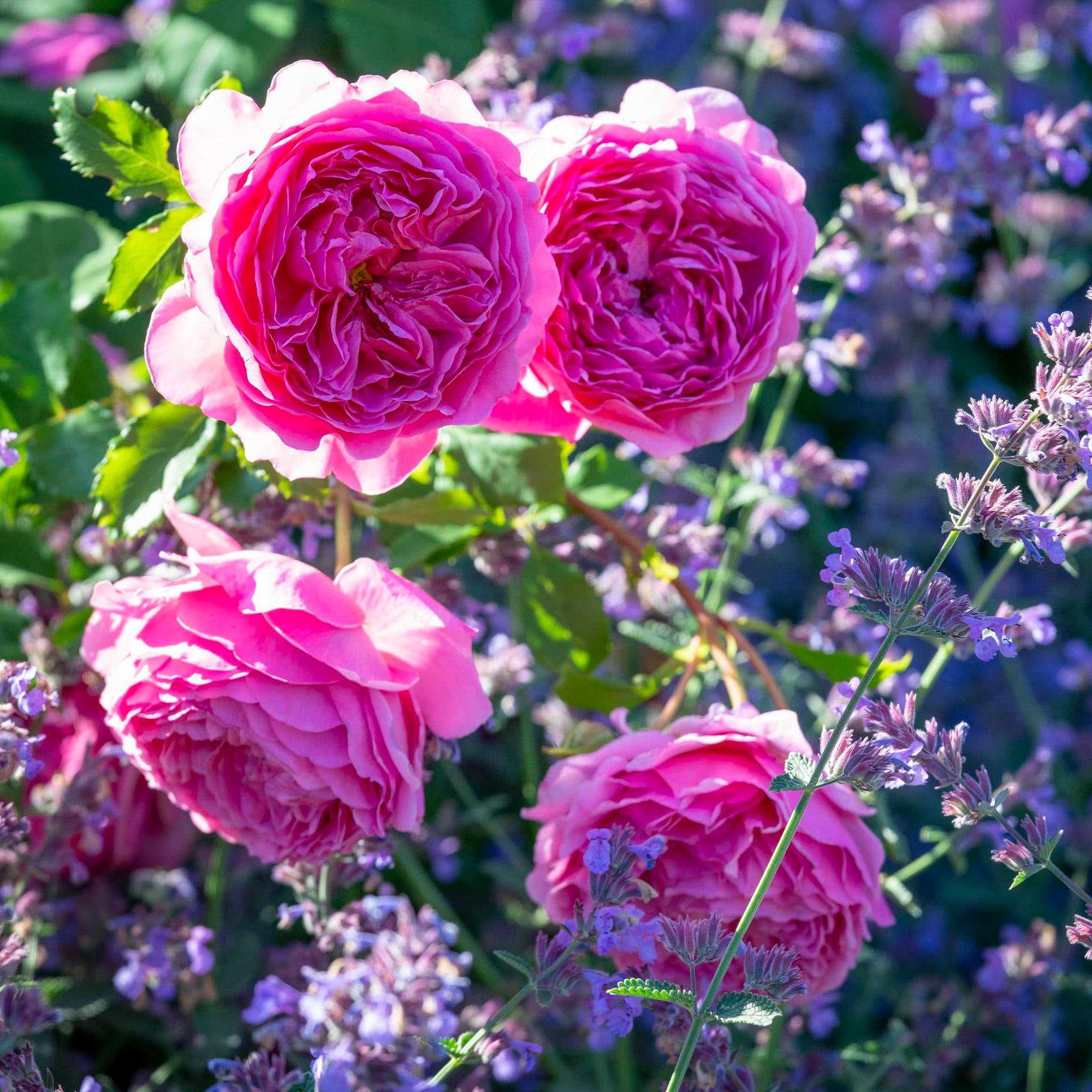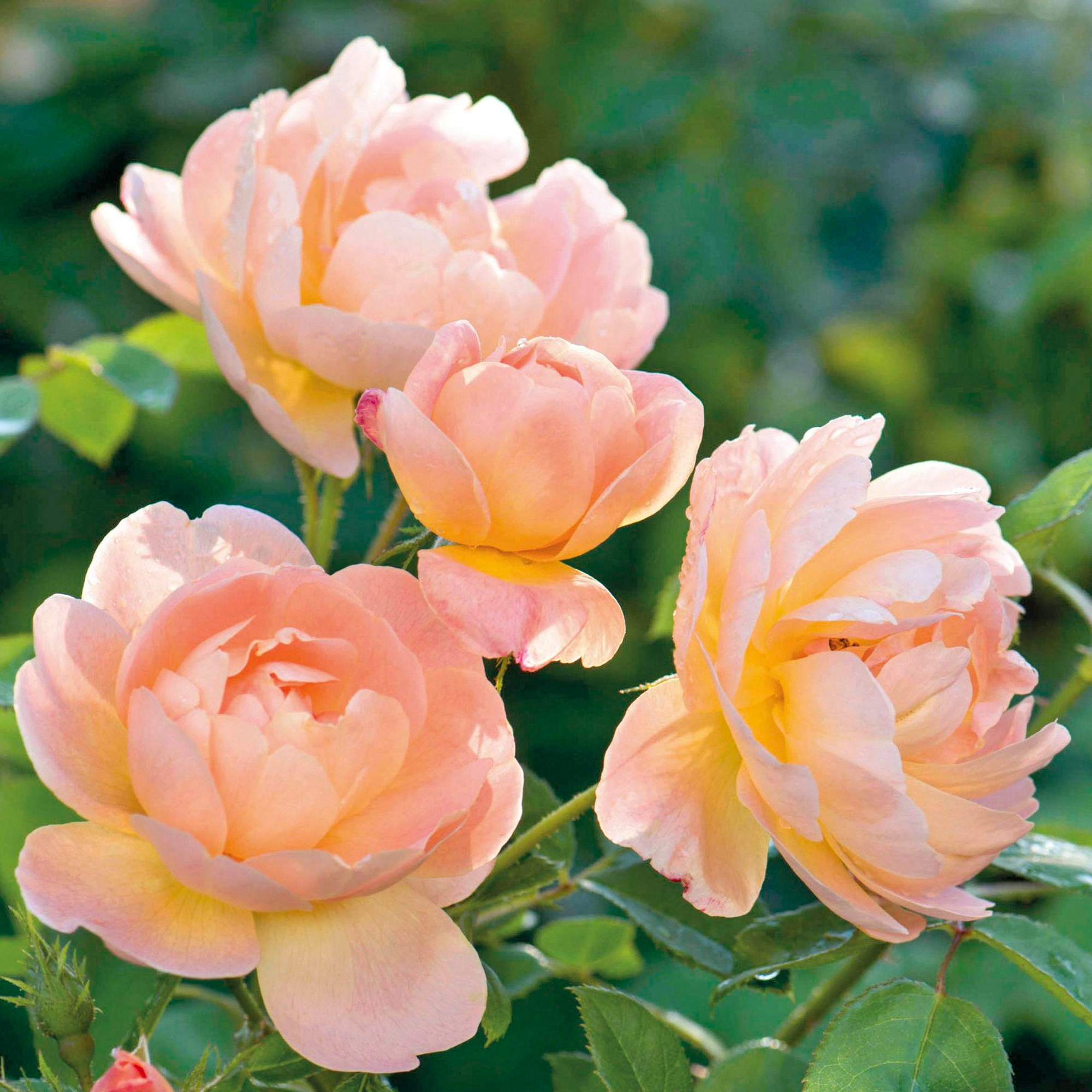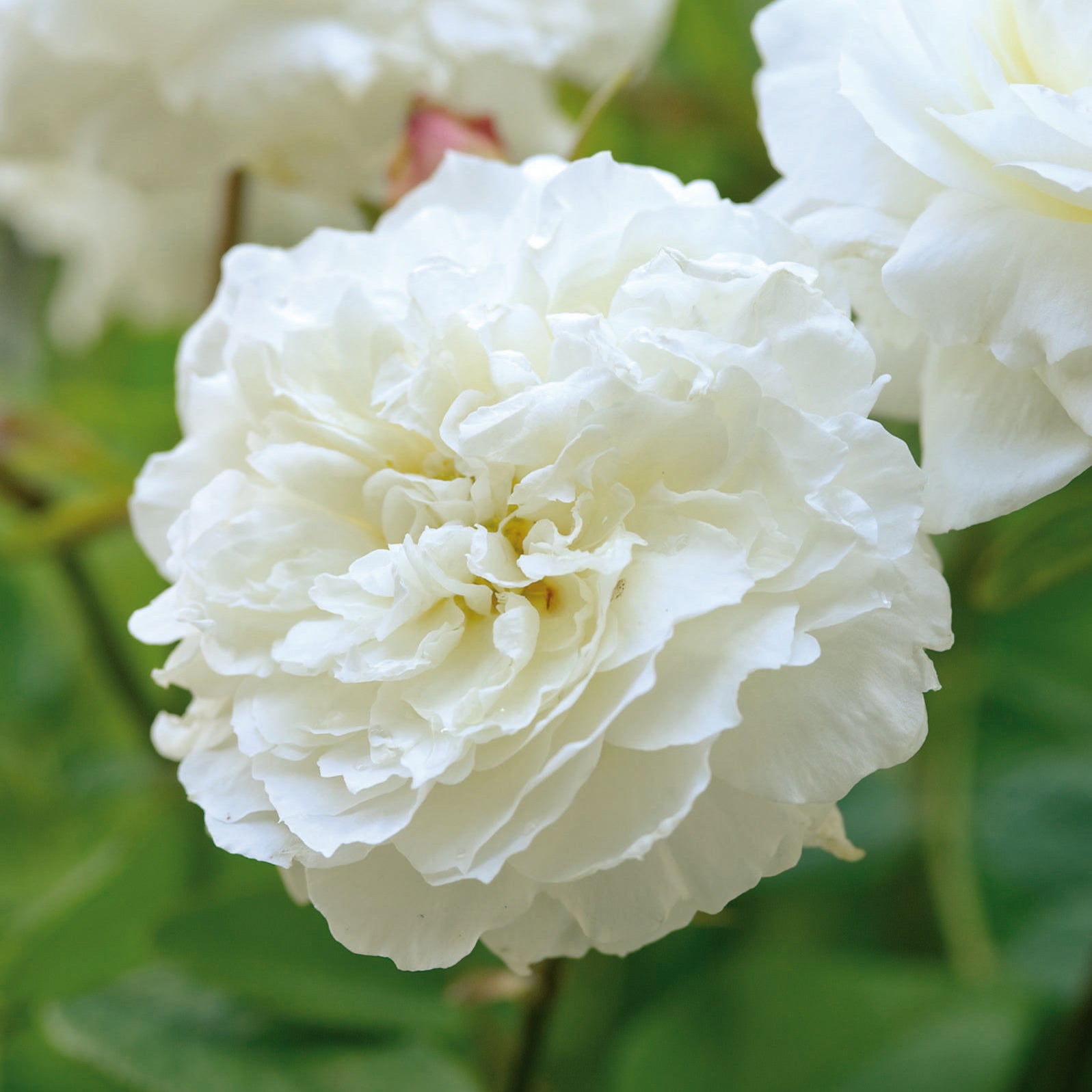With the spring sunshine finally reaching the garden, now is the perfect time to check in on your newly planted bare root roses. They're just beginning to settle in, and the care you give them over the next few weeks will make all the difference to how well they grow and bloom this summer.
Why Watering Matters for New Roses
In their first few months, bare root roses are focused on building strong roots. Without these, they can't take in the water and nutrients they need to thrive. Proper watering helps ease transplant shock, encourages roots to grow deeply, supports healthy growth, and helps roses stay strong against pests and disease.
Roses like their soil to be moist but not soggy. If the ground is too wet, roots can struggle and may rot. If it's too dry, the rose won't be able to settle in properly. The goal is to keep the soil damp a few inches below the surface. The best way to check is to gently dig about three inches down and feel the soil with your fingers.
When to Water
From May through September, you’ll want to keep a close eye on moisture levels. Warm or windy weather can dry the soil out quickly, so it’s a good idea to water newly planted roses every two or three days. Even if it’s rained, don’t assume the roots got what they need. Rain often doesn’t soak deep enough.
Some planting spots will need a bit more care. If your rose is next to a wall or fence, in sandy soil, or near a tree or hedge, it may need extra water. These conditions can stop moisture from reaching the roots or cause it to drain away too quickly.
Watering in the evening is preferable. This provides water when the plant needs it the most. It is essential to water at the base only and avoid wetting the stems and leaves. Many fungal diseases need wet leaves to develop so this will help with disease prevention.
Adjusting for Conditions
If your rose is planted in sandy soil or exposed to sun and wind, you may need to water more often. If it’s near other plants or structures, they could be using up the water first.
Heavy clay soils, on the other hand, hold moisture for longer. You’ll likely need to water less often, but be careful. If clay soil dries out completely, it can be hard to re-wet. Keep an eye on it and don’t let it get too dry.
Adding a mulch around the base of your rose is a great way to help the soil hold moisture and keep the temperature stable.
Roses in containers dry out faster than those in the ground, especially in warm or windy weather. If you’ve planted your rose in peat-free compost, it’s important not to let it dry out completely. Some peat-free materials can actually repel water when dry.
To avoid this, water little and often. Make sure the water reaches the roots but don’t let the compost become waterlogged. Watch for signs of stress. Pale or wilting leaves, stunted growth, or a musty smell could mean too much water. Curled or crispy leaves, drooping flowers, and smaller blooms often point to too little.
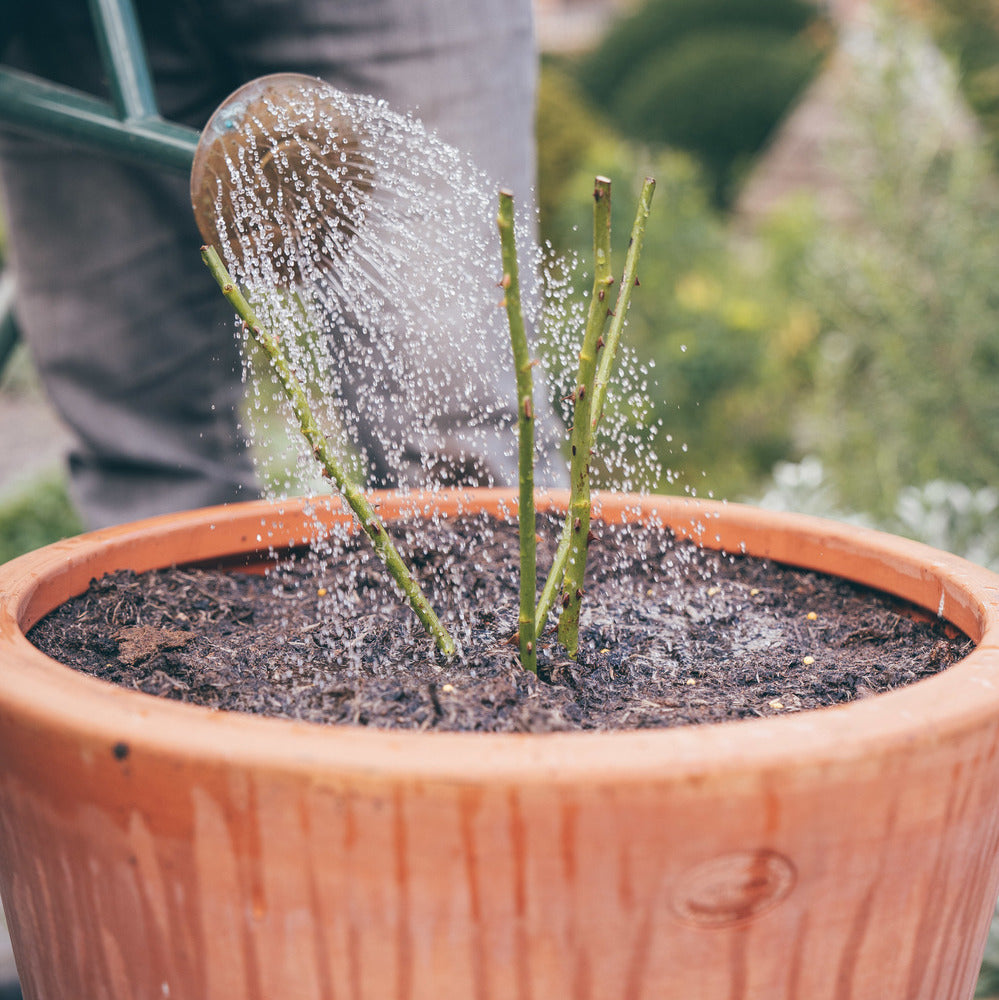
How Much to Water
As a guide, give each rose about 5 litres of water at a time. That’s just over a gallon. Using a watering can helps you keep track. If you’re using a hose, time how long it takes to fill a 5-litre bucket and use that as your measure.
How often you water will depend on your soil, the weather, and where the rose is planted. Always check a few inches below the surface before deciding to water again.
How to Water
The best way to water is at the base of the plant, directly onto the soil. Avoid getting the leaves or flowers wet, as this can lead to disease.
If you’re using a hose, choose a gentle setting or remove the nozzle completely and place the hose near the base. If water starts running off, pause for a moment to let it soak in. You can also build a shallow well around the base to help water collect and go where it’s needed.
For hard-to-reach spots, you can use watering pipes to guide water down to the roots. Drip irrigation systems can work, but they need to be checked regularly to make sure the roses aren’t getting too much or too little.
Using Water Wisely
Collecting rainwater is a great way to care for your garden and the environment. During droughts or hosepipe bans, greywater from your home (like bath or dish water) can be used if you use eco-friendly products.
Mulching helps the soil stay moist for longer and keeps roots cooler on hot days. If you’re growing in pots, avoid black or dark containers that can heat up and dry out more quickly.
Always water the soil, not the plant. This helps prevent waste and keeps your rose healthier by avoiding moisture on the leaves.
A Little Care Now Means Beautiful Blooms Later
With a steady watering routine and just a bit of attention, your new roses will reward you with strong growth and beautiful blooms. Keep checking the soil, adjust for the weather, and trust that each drop of water is helping your rose thrive.







